It’s a tale well told and a trip well made. One visits Italy, falls in love with the good wine and even better food, and then decides to move there. Or perhaps they’ve not even visited Italy at all, but have enjoyed Bel Paese vicariously, from afar, via Andrew Graham-Dixon and Georgio Locatelli’s blossoming bromance on Italy Unpacked or in Rachel Roddy’s weekly dispatches from her Rome kitchen in the Guardian.
If an ambrosial penne all’arrabbiata or perfect panzanella has got you longing to up sticks and move to Italy, then you’re probably wondering where exactly to focus your search, so you’re as close to the finest produce, vineyards and restaurants as possible.
In our humble opinion, some of the very best food in Italy is found in Tuscany, with its villages perched on rolling hills punctuated by wildflower and Cypress trees, and its splendid Renaissance architecture in the region’s famous cities. But most importantly, its cucina contadina, a rustic style of cooking inspired by the farms and unique terroir of the region, is the stuff of lore and legend.
The region’s fertile landscape gives rise to an abundance of fresh produce and, of course, the grapes used in its renowned wines and olives used in its world class olive oil. As such, Tuscany has a unique, exceptional cuisine all of its own. It’s a place that recognises and relishes humble food in the form of cucina povera just as much as it does Michelin star meals, of which Tuscany has many.
Tuscany is also the place that pioneered the slow food movement, that farm-to table-culinary ethos that spread across the world. Here is the movement’s home, and if you’re looking to make the region yours and buy a home in Tuscany, Italy, then you’ve come to the right place; here are the best places to live in Tuscany for foodies.
FLORENCE – IDEAL FOR FINE DINERS
We had to start here. After all, Florence is the capital of Tuscany’s fine dining scene, especially where critically acclaimed restaurants are concerned. At the time of writing, the city was home to one 3 Michelin starred restaurant (Enoteca Pinchiorri), one 2 star (Santa Elisabetta) and six 1 star eateries, including our favourite Gucci Osteria da Massimo Bottura, the world famous chef’s only restaurant in Italy outside of his hometown of Modena.
You don’t have to spend the big Euros in a Michelin starred restaurant to enjoy the city’s most iconic dishes, however. Bistecca alla Fiorentina, a T-bone steak that packs bags of deep, rich flavour owing to its marbling and even distribution of fat, is the signature dish of the city. Usually grilled over fire and shared between two, it’s advisable to bring a friend (or hearty appetite). As with most food in Florence, the ingredients are allowed to shine and appreciate relatively unadorned, here simply with lemon, olive oil and a few flakes of good salt.
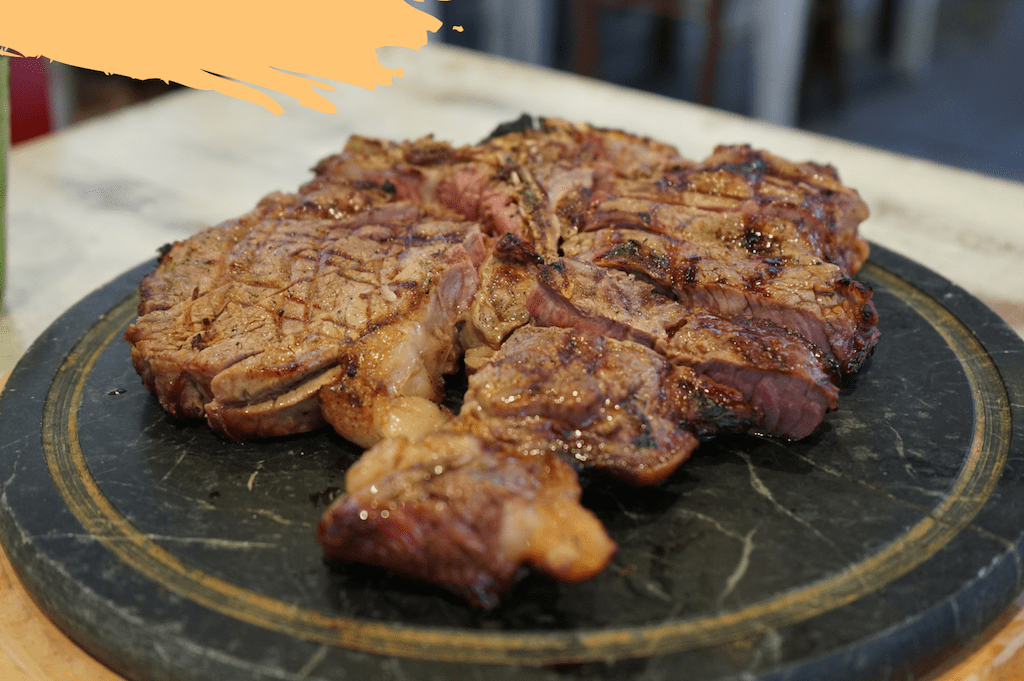
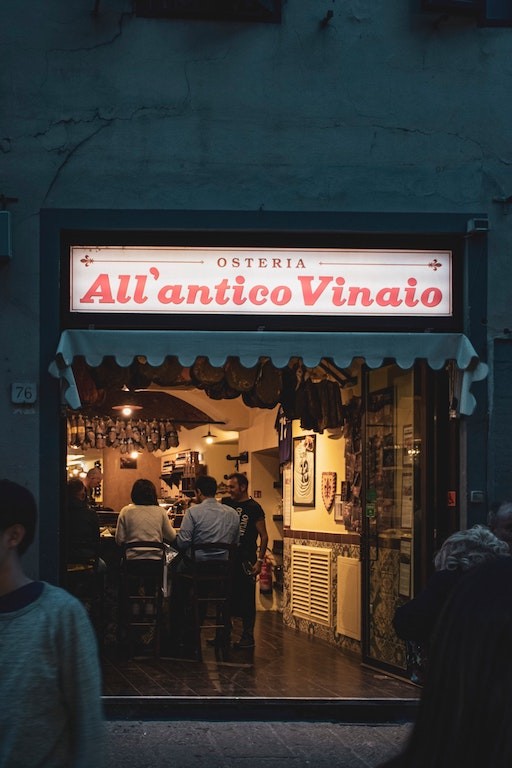
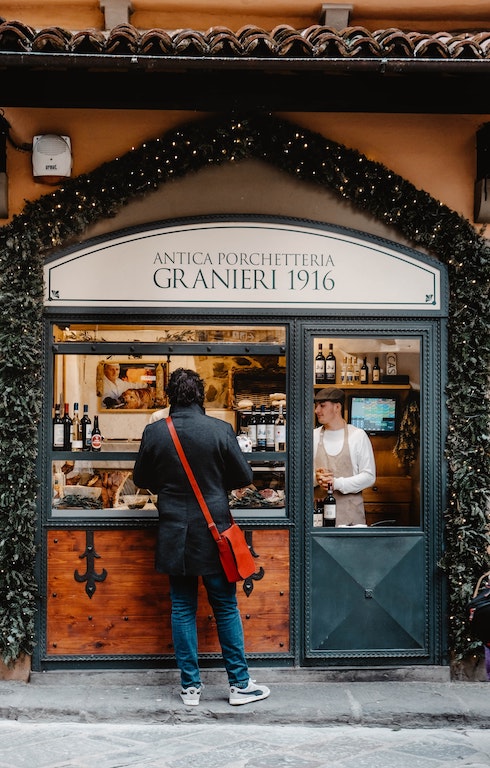
The Chianina breed of cattle from which the steak comes is as historic and revered as it gets – references to their characteristic white colour and dazzlingly flavoured meat date back some 2,000 years. They live a relaxed life on the hills of the Chiana Valley, and this shows in the tender, flavoursome meat. You’ll find the dish at trattorias all over the city; our favourite places to do so are perhaps Del Fagioli, with its open kitchen close to the banks of the River Arno, or Buca Mario, which boasts perhaps the most boisterous atmosphere in all of town.
You should also try the classic Florentine sandwich, panino al lampredotto, which is a street food staple you’ll find all over the city. Here, the edible lining of cow’s stomach (the lampredotto) and sometimes other offal is simmered in stock until tender, then served in a bap. If that’s not funky enough for you, then trippa alla Fiorentina will see you right; Florentine style tripe usually served in a thin, slow cooked tomato sauce and topped with freshly grated parmesan.
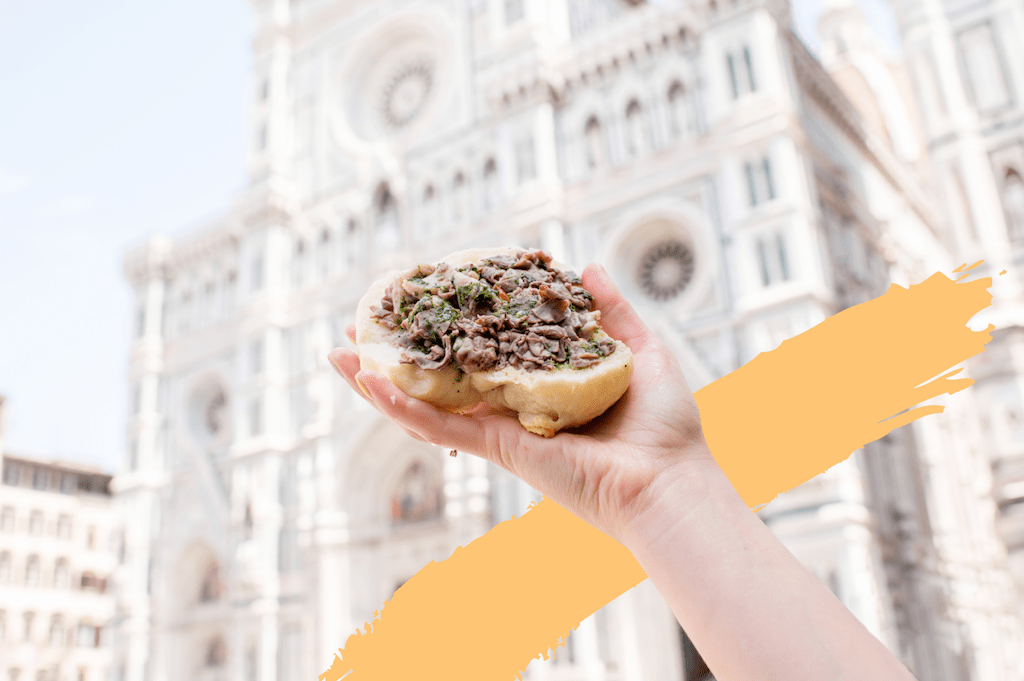
That said, if you’re setting up home in the city, you’re certainly not going to want to eat in restaurants every night of the week. Fortunately, to rustle up a Florentine feast in your new home is easy. Florence is surrounded by the Tuscan countryside and is within reach of the coast. As such, the produce is superb and its markets provide a rich larder to work from.
Locals head to Sant’Ambrogio, which is slightly outside the city centre and provides all you would expect from a Tuscan market. San Lorenzo Mercato Centrale is where you’ll be spending your weekends; the dining area on the first floor serves up Italian street food. Oh, and there’s a cooking school – the Florence Culinary Arts School – in the city, too, if you’re keen to further your Tuscan cooking skills.
Read: 5 IDEAL reasons why foodies should flock to Florence.
LIVORNO – IDEAL FOR SEAFOOD LOVERS
Tuscany’s third largest city Livorno is famous for its seafood which is widely considered the best on the Tyrrhenian coast (the coastal stretch between Palermo and Milazzo). As a port city on Italy’s west coast, the tomato, first introduced here by the Spaniards sailing from America, arrived in Livorno earlier than other cities, meaning many local dishes contain more tomatoes than you’d perhaps expect. In fact, the first recorded mention of a tomato in Italian historical records came in the mid 1500s, found in the famous explorer Cosimo’s botanical gardens in Pisa.
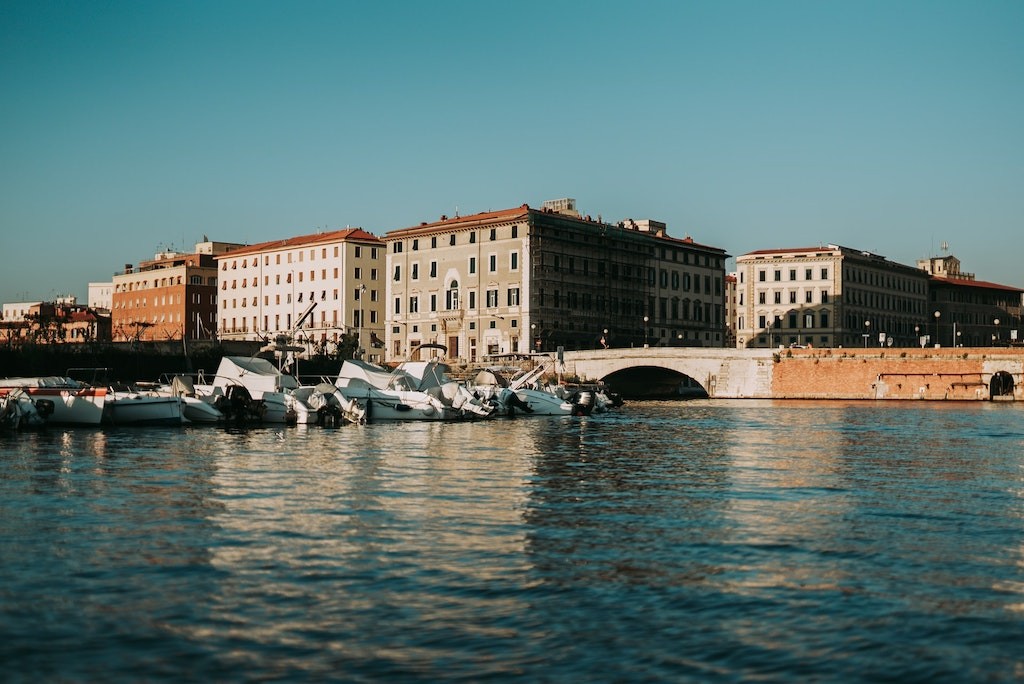
To get under the skin of Livorno, you need to first know its history. Livorno was one of the earliest, most successful and influential examples of a free port in Europe, with many coming here to escape legal and religious persecutions in the 1600s. As such, it became home to people of many nations and many religions and was known for its multiculturalism.
Many Sephardic Jews sought refuge here and many of the most identifiable Livornese dishes have Jewish origins. These include Triglie alla mosaica (whole red mullet cooked in tomatoes), Baccalà alla Livornese, a deeply delicious take on salt cod, and Cacciucco alla Livornese, a fish stew using, like so many of the world’s best fish dishes, whatever is left unsold from the fisherman’s daily catch.
If you’re keen to feel at home in your new city, why not cook the local Leghorn chicken, named after the old, anglicised name of the city. And what better way to spend your Saturdays than by sipping on ponce Livornese, a type of punch which is a typical Livornese drink made with coffee, rum, sugar and lemon peel, served warm.
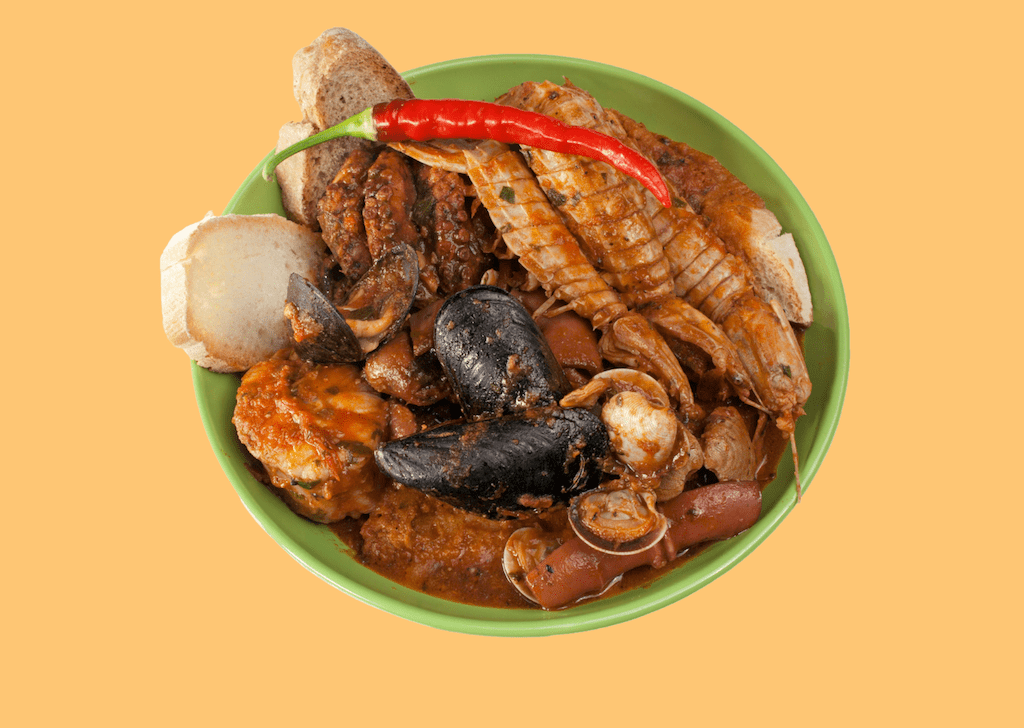
SIENA – IDEAL FOR PASTA PEOPLE
Pici, the wonderfully dense pasta found all over Florence, is Siena’s proudest contribution to the world of pasta and is often called pici Senesi. We’d move to Siena for this amazing product alone, often served with a simple tomato and garlic sauce, pici all’aglione, an even simpler sauce of black pepper and pecorino cheese, or sometimes dressed with a more indulgent duck ragu. Or, do as the locals do, and enjoy several courses of pasta in a single sitting!
If you’re keen to get a feel for the pace of life in Siena and perhaps even meet some locals, then it’s to Piazza del Campo you should head. The huge central square and heart of the city is a picturesque meeting point for those who call Siena home, peppered with cafes and the odd trattoria. Sipping a coffee in the square, enjoyed with a serving of ricciarelli, a traditional biscuit made with almonds, and indulging in some people watching, is one of Siena’s great pleasures. Can you imagine doing so every weekend? We certainly can.
Read: How to eat like a local in Tuscany

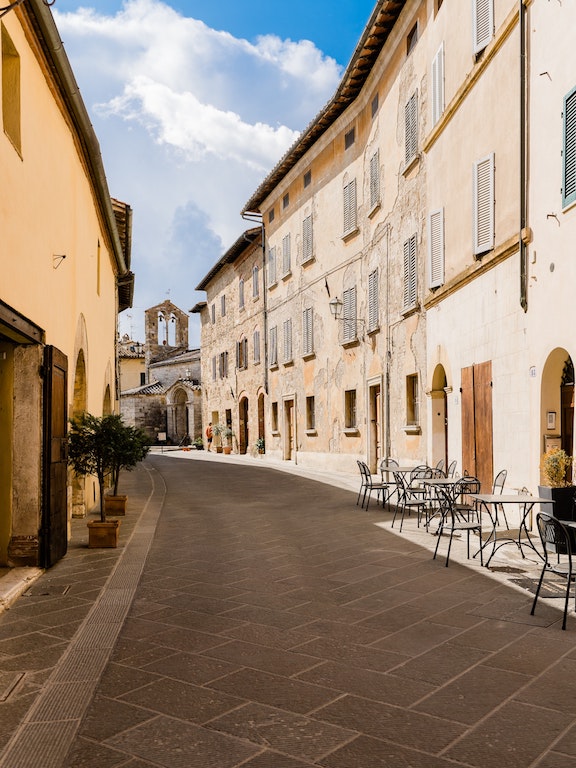

CHIANTI – IDEAL FOR OENOPHILES
Moving to Tuscany is a dream come true for wine lovers. Indeed, you could spend the rest of your days whiling away your time at different wine tastings and visiting vineyards with little chance of getting bored.
Tuscany is the birthplace of some of the world’s most iconic wines such as Chianti, Vino Nobile and Brunello, to name but a few. Chianti is one of Italy’s most iconic, noble vintages, with ancient origins dating back to the Middle Ages; if you are an oenophile, it’s here you should move.
If you’re seeking a more laid-back approach to life, you’ll find it on Chianti’s gently rolling hills, olive groves, in its rustic villages and countless vineyards. Also, it’s a hop, skip (or a stagger depending on how much wine you’ve had) away from Florence which means you can experience the hustle and bustle of city life when you fancy a change of pace and scenery.
Should you been keen to sample the unique rhythms of rural Italian life before deciding where to pitch up more permanently, then consider renting a luxury villa here, of which there are many, to ‘test run’ your surrounds and see if they suit you.
While talking about places for oenophiles to live in Tuscany, it would be remiss of us not to mention the Bolgheri region, which is famous for producing Sassicaia Wine, widely accepted as one of the greatest Cabernet Sauvignon wines in the world. Read more about it here and with that, we’ll leave you to your bottle. Cin cin!




